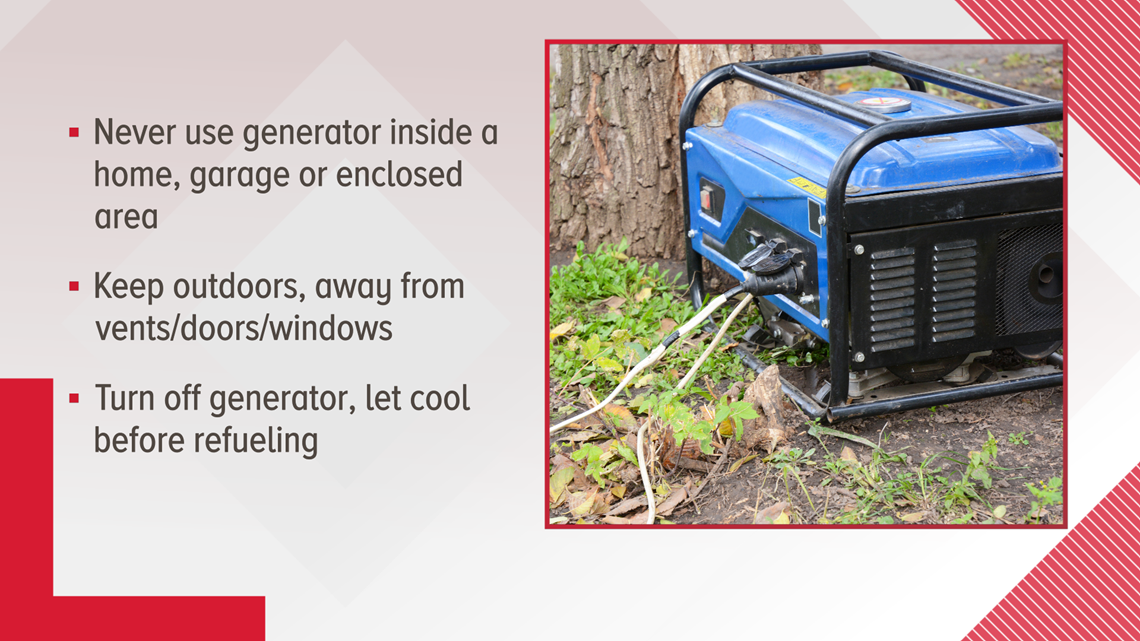Using a generator is an option many choose to provide temporary power during an outage, but it’s important to know how to use it safely.
Entergy reported more than 100,000 power outages in Southeast Texas Friday night in the aftermath of Hurricane Delta. As of Saturday at 10 a.m., around 94,500 Entergy customers are without power. Orange County has more than 27,000 customers without power.
Jefferson County Judge Jeff Branick said Saturday morning it’s “never an option to run a generator in an enclosed or partially enclosed structure, including living spaces.”
In Orange County, a 48-year-old man died after being found unresponsive by family in his home following Hurricane Laura. A generator was located in the garage of his home. David Heard was the fifth generator-related death in Southeast Texas following Laura, according to authorities.
“Portable generators can produce deadly levels of carbon monoxide, a colorless, odorless and tasteless gas making it nearly impossible to detect before it’s too late,” Branick said.
Carbon monoxide fumes can be a huge risk when using generators.
“Always keep and read the owner’s manual and follow all safety guidelines and warnings provided,” Branick said.
Here are a few safety tips to keep in mind when using a generator.
- Always follow manufacturer instructions when setting up a generator.
- Never use a generator inside your home or garage.
- Only use a generator outside in a well-ventilated area.
- Place your generator at least 20 feet away from your home.
- Double check that the exhaust is pointed away from any doors of vents.
KNOW YOUR GENERATOR
- Read all of the information on installation, safety and maintenance.
- Follow instructions regarding maintenance and testing.
When a generator is not properly installed, it can "backfeed" through the transformer and produce an output of 7,200 volts on the distribution line. As a result, a line crew working on the system would be put in danger.
ISOLATE YOUR GENERATOR
- Keep your generator away from the power lines.
- Connect appliances and other devices directly to the generator with the appropriate-sized cords.
If you connect it directly to your building's wiring, a transfer, double-throw switch is required to separate your generator from the your service provider's system.
TAKE CARE WHEN FUELING
Never try to refuel the unit while it is operating. Avoid spilling gasoline or other fuels on hot components.
PROVIDE ADEQUATE VENTILATION
- Give your generator adequate ventilation and air cooling to prevent overheating and the accumulation of toxic exhaust fumes.
- Do not install your generator in a basement or any closed area.
Symptoms of carbon monoxide poisoning range from mild to severe, and can sometimes feel flu-like. Some of the symptoms include:
- Headache
- Dizziness
- Weakness
- Nausea
- Vomiting
- Chest pain
- Confusion



